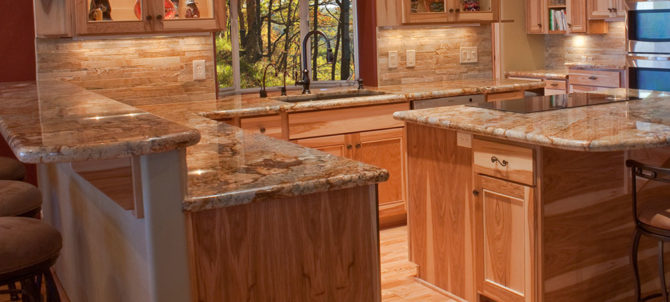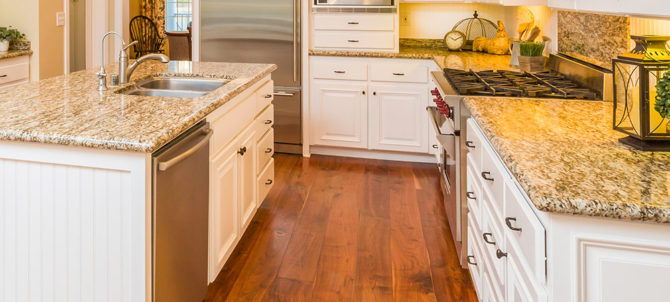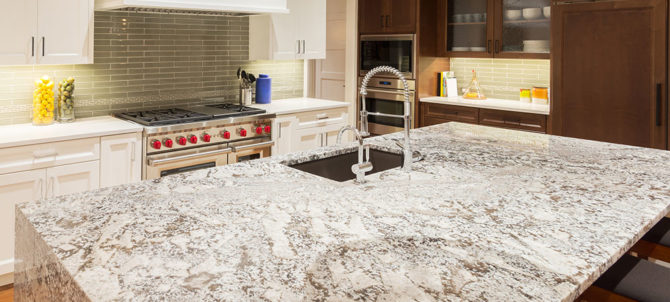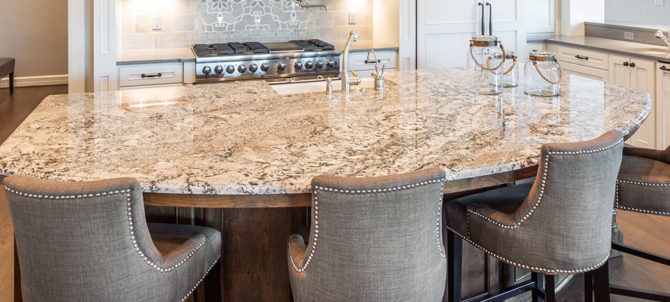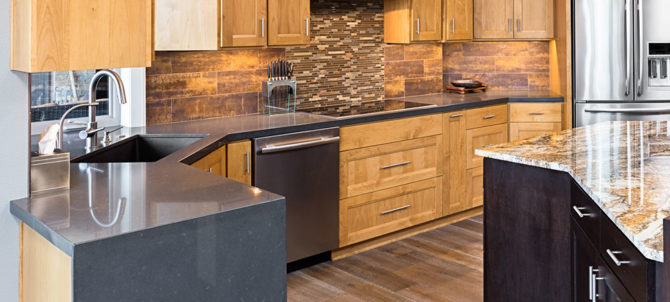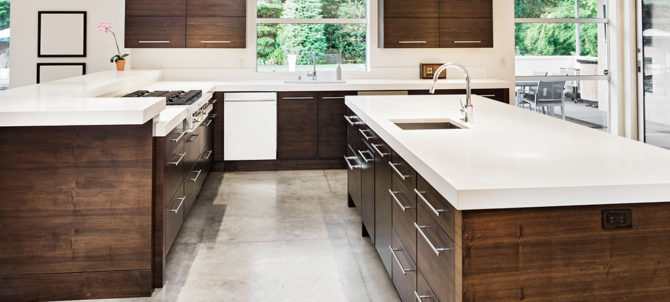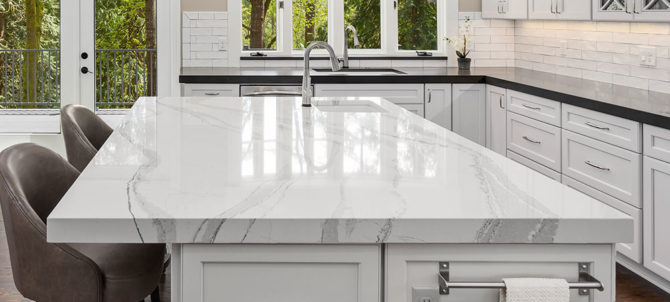
Granite countertops are among the most popular materials for kitchen renovations. Since the distinctive surface has excellent durability you must be wondering whether you can use lemon on it, right?
You shouldn’t because lemon is corrosive and can etch the surfaces. The same way you should avoid using lemon on granite is the same way you should avoid using vinegar and ammonia on the surfaces.
You also should avoid using bleach to clean your surfaces. Although bleach can cure stains on sealed granite, cleaning the surfaces with a softer touch is advisable to avoid damaging your stone.
A basic daily cleaning with a granite-safe cleaner would suffice because sealed granite is already quite resistant to microorganisms. Clean your counters once a day using a paper towel or lint-free cloth and granite cleanser.
Other best practices
Besides avoiding cleaning your countertops using harsh chemicals, you should do several other things to keep your granite surfaces in top shape. These things include:
Clean the surfaces as frequently as possible
Mistakes are bound to occur, and spills happen.
When this happens, you should clean up spills as soon as they occur, whether small water stains or larger ones like coffee or wine. You should note that you shouldn’t care whether the countertops are sealed or not. It doesn’t matter. You should move with haste and get rid of the spills as soon as they happen.
You should note that your countertops may discolor in the areas where the sealant has broken down if you haven’t sealed them recently.
Dab spills with a paper towel rather than wiping them up for optimal results. After that, use water to rinse, then a cloth to dry.
Protect the surfaces from heat.
So, is it safe to place hot pans on granite worktops? Occasionally, you must put down a pan or two in a busy kitchen. Even though granite worktops can tolerate some heat, it’s not a good idea to push the material’s tolerance by frequently setting a hot pan on them.
Although granite is relatively durable, frequent heat exposure can leave hot pan stains on the surface.
To prevent heat damage on your counter, swiftly grab a buffer such as table mats or rubber, fabric, and wooden coasters instead of setting a pan or other hot object straight on it.
It could take an extra moment or two, but it’s far less expensive than replacing the countertops completely after they are irreparably damaged.
Don’t cut directly on the counters.
Cutting directly on the counter will probably not damage it, but it will dull your knives. Also, cutting raw meat and vegetables together is unsafe because the germs from the raw meat can spread to the veggies, which might not be cooked to a temperature high enough to destroy the bacteria.
You should always use a cutting board to safeguard your family’s safety and the counter’s finish and keep your blades sharp.
Never ignore liquids
You might think you have tough countertops, so you don’t need to worry when liquids spill on your surfaces. Unfortunately, you shouldn’t do this.
Granite is not porous; however, spills that remain on the surface for a long time might leave stains. Even standing water can produce a dark patch on the surface. Granite counters can also get stains from red wine, coffee, or citrus juices, which should be cleaned up once.
Although tempting, setting ornamental oil bottles on your counter can cause damage.
Oil tends to pool on the surface and flow down the container. The counter may become discolored as a result of this.
Keep any oils in the cabinet and clean up spills right away.
Keep acids away from the countertops.
When it comes to things that shouldn’t be on granite countertops, acids are among the top items to keep off of them.
Acidic solutions, meals, drinks, and even coffee and milk should always have a barrier between them and your countertops to prevent damage to the sealant.
Make sure to wipe up spills immediately to prevent these toxins from causing long-term damage to your granite.
Don’t sit on the countertops.
Granite has a strong, long-lasting surface, but it can’t support a lot of weight. This means that when you sit at the counters, chances are that you will break it. If you’re wondering if sitting on granite counters is wise, the answer is no.
Countertops are not designed with a plywood backing to support a human-sized weight, and the additional pressure might cause cracks in your stone. You don’t want this, do you?
Even though it might not happen right away, sitting—or standing—on your surface will eventually cause irreversible harm.
Many people sit on the countertops while waiting for the food to cook. Instead of sitting on the counters, you should have a seat in the kitchen where you sit as you prepare the meals.
Seal the countertops
Regular granite counter sealing helps shield your surfaces from damage and stains caused by stain-treating agents like bleach. You can seal your counters in approximately fifteen minutes with the correct product and technique.
After thoroughly washing your granite, use a granite sealer in three-foot portions. Using a fresh cloth, quickly wipe the sealer onto the countertop before polishing the surface until it dries. For optimal protection, repeat the procedure two or three times.
Parting shot
Since lemon includes calcite, it can be extremely harmful to granite. Due to this, avoid using cleaners containing lemon extract on your granite surface and use caution when utilizing lemon in your cooking.
Scrubbing cleaners should not be used on granite since they can erode the seal and expose the stone.
You should use only warm water and mild soap to clean granite. Ensure you thoroughly rinse the soap off the granite kitchen countertops NC to avoid developing a buildup that will make your counter appear unappealing.
